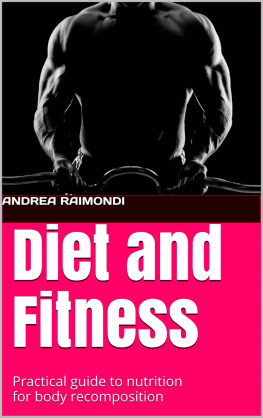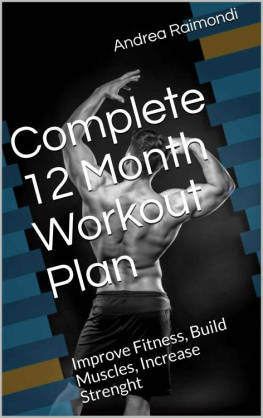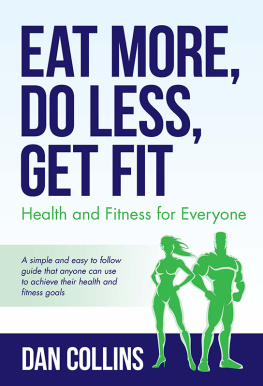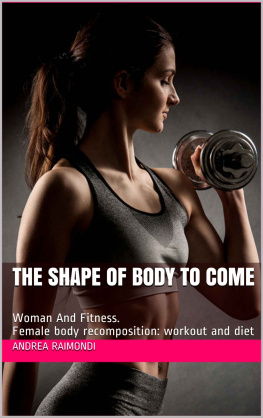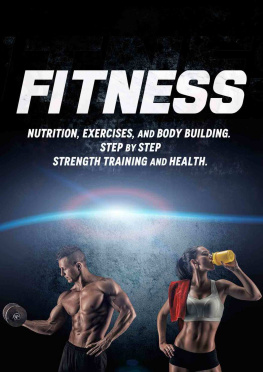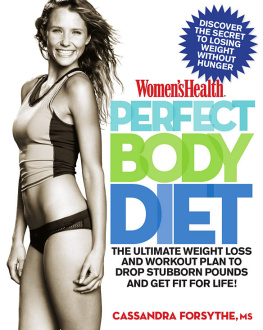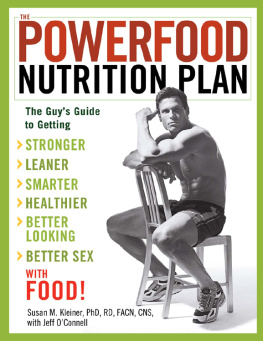DIET AND FITNESS
Practical guide to nutrition for body recomposition
Create your diet without renunciation
2021 Andrea Raimondi
All rights reserved
For partial use of the contents, write to info@fitnessedintorni.it
to Filippo and Massimiliano
DIET AND FITNESS
Practical guide to nutrition for body recomposition
Create your diet without renunciation
Indice
Introduction 4
Energy systems 6
Kilocalories 14
Energy balance 16
Food categories 19
Macronutrients 22
Micronutrients 28
Supplements 30
Food diary 33
Muscle Physiology 36
Measurements and indices 40
Indices 44
Functional assessment 52
Aerobic activity 54
Why we eat too much 57
Food plan 59
Diets. Practical examples 64
Body recomposition 81
Training protocols 92
Appendix 1 Food Tables 122
Appendix 2 Protein Shakes and Smoothies 133
Introduction
When we talk about nutrition and physical improvement, many arguments must be taken into consideration and many emotions are stimulated.
It is a topic that concerns the psychological aspects of living in our time, in which people with an unnatural physique are proposed as examples to follow.
It is a characteristic of human beings to try to achieve goals through the simplest and fastest way: this is why pills are cyclically so successfully proposed as miraculous for slimming or building muscles.
The reality is that all of this cannot happen. The human body is a complex functioning machine, that seeks constant balance. Any change that begins to change that balance takes time, unless... Unless you force the body with substances that alter its functioning, as happens taking steroids. Everyone is free to use their body as they want, even better if they openly declare the practices they use. Even today, in world of gyms, it is not openly said that the physicists of bodybuilders, even those who profess to be "natural", are unnatural. The evidence is denied.
To seriously and scientifically address the issue of nutrition, body recomposition, and weight loss, the functioning of the body must know; where it gets the energy to live, and how this energy is used or stored. In this way, we will obtain key points to use when we are offered food solutions to our needs, to our goals.
Once you know the basics, it becomes easy to build a food and training plan that suits your needs. Of course, it is always better to ask a doctor for advice, and perform a check-up before any physical activity, especially if you have not been for a long time, or always. Just as it is good to contact a human nutrition specialist in the case of serious food imbalances or in pathological situations.
The fundamental rule is gradualness of efforts over time, setting reasonable goals, and above all, finding the motivation not to stop in front of the first difficulties.
In the following pages, I tried to define a framework of fundamental topics that can lead the reader to reach an autonomy of judgment on what is usually proposed. To enable him to understand and build a food plan for changing his body. In this path, it is also better to combine a training plan, like that described in my book "Complete 12 Months Workout Plan".
Energy systems
How does the human body produce the energy to live and to contract muscles?
All life forms need energy to grow, move and maintain. Thousands of energy-requiring processes continually occur within cells to meet life's demands. Energy can take many forms in biological systems, but the most useful energy molecule is known as adenosine triphosphate (ATP).
There are four different energy systems that generate ATP during exercise. In the context of physical activity, the contribution of each of these systems is determined by its intensity and duration.
The four energy systems of the body are:
the anaerobic alactacid system or phosphagen system, with the use of energy substrates such as adenosine triphosphate (ATP) and phosphocreatine (PC);
the anaerobic lactacid or glycolysis system, with the use of energy substrates such as glycogen and glucose, given by carbohydrates;
the aerobic glycolytic system, with the use of energy substrates such as glycogen / glucose;
the aerobic lipolytic system with the use of energy substrates such as free fatty acids (FFA).
We note here that the use of the source constituted by body fats is activated following a prolonged, and not maximal, effort. From this fact derives the importance of aerobic training sessions in case you need to lose weight. For this purpose it is useful to adopt training techniques such as the so-called "circuit" one, which allows you to increase oxygen consumption during training. However, we always keep in mind that all energy systems work simultaneously to produce or restore energy supplies.
The muscle fiber cell transforms chemical energy into movement by means of muscle contraction. Chemical energy derives from the degradation of ATP. The duration of muscular effort forces the cells to run out of immediately usable stocks and to resort to other sources such as glucose, through the mechanism of glycolysis. This mechanism leads to the formation of lactic acid, which in turn sets in motion a series of reactions in the cellular environment that lead to curb the production of ATP itself. At this point, oxygen comes into play, which is able to degrade glucose with greater efficiency. Oxygen is carried from the outside of the muscle fiber cells through the blood. In this way, slow-twitch red fibers are preferred, which are more charged with blood, and therefore with oxygen, and allow the effort to be prolonged for even long times, but not at the maximum level. The speed with which ATP is rebuilt allows the muscle contraction to continue. Exercise produces the necessary adjustments to improve this mechanism.
The energy needed by the body, we have seen, comes from food consumption. The body's cells can use various types of fuel. The fuel used mainly and in normal conditions is produced by the breakdown of carbohydrates and fats, while in extreme cases only, proteins are degraded. We will see later in more detail what these elements are, and what they do. For the moment it is important to understand how power can be used to improve energy supply.

Carbohydrates and energy
Carbohydrates or glycides or sugars are the first form of energy that all cells use in normal conditions and during physical exercise.
The carbohydrates present in food have different constitution, some are simpler, others have a more complex structure. The latter are transformed through digestion into simpler compounds, until glucose is obtained.
Glucose is present in foods of vegetal origin or is produced in the intestine by obtaining it from complex carbohydrates such as disaccharides (like lactose present in milk, for example), oligosaccharides or polysaccharides, such as starches.
Once produced, glucose is transported through the blood to all the tissues that use it, or it is stored in the form of glycogen in the liver and muscles.
If glucose production exceeds the capacity for use and storage, its molecules are transformed into fatty acids and stored in adipose tissue. This process occurs both directly in the liver and in the tissues, mainly in the adipose tissue.
Glucose is also the main energy source for the brain and for red blood cells.
A minimum amount of glucose is always produced from proteins in cases of absolute lack of other source. Anyway, the glucose storage capacity is limited, and prolonged exercise leads to rapidly depleting its stores. In this case, glucose must be produced using chemical processes mediated by oxygen.
Next page
